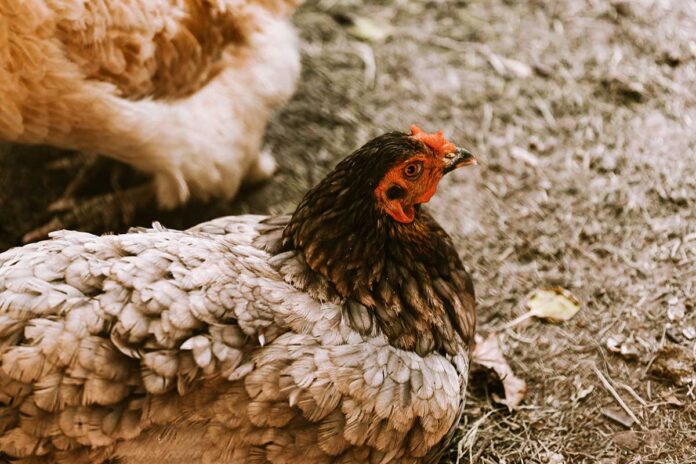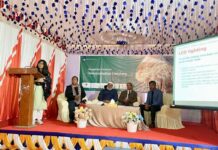
Poultry production has been identified as an efficient source of terrestrial, farmed animal protein. However, in tandem with all food production, sustainability into the future will be a fundamental requirement. Animal nutrition of farmed animals is central to all aspects of sustainability. The more efficient animals are, the more financially viable production operations become, with a reduced environmental impact and in many cases improved bird welfare. However, little work on the impact of nutrition on sustainability of egg production has been published.
This paper reports an evaluation of diets and and egg output using field performance data from individually housed Hy-Line Brown hens, calculated by applying six environmental parameters assessed for individual feed ingredients by Institut National de Recherche pour l’Agriculture (INRA). A modelling exercise allowed for the determination of the environmental impact of layer diets.
Introduction
True sustainability was defined by the World Commission on Environment and Development (Brundtland Commission, 1987) as “the ability to meet the needs of the present without compromising the ability of future generations to meet their own needs”.Sustainability is a concept with multiple facets including, environmental (which includes both the demand for resources and environmental pollution), ethical (welfare and social conscience), economic and enforcement (often described as four E’s of sustainability, FAO 2012). There are interdependencies between the different elements of sustainability, and often progress in one area has negative consequences on another. Measuring sustainability is complex as the entire value chain ought to be considered. Environmental and economic components are included in a complete lifecycle assessment (LCA). In a complete LCA of poultry in the United Kingdom Leinonen and Kyriazakis (2016) applied the BSI (2011) PAS 2050:2011 carbon footprint standards and identified feed components as the largest contributor towards global warming potential. De Vries and de Boer (2010) calculated production of a kg of egg protein was similar to a kg of broiler protein, requiring between 41 and 48 m2 of land resources. Poultry is the most environmentally friendly of farmed terrestrial and aquatic animal production per unit of edible product. However, opportunities exist to improve efficiencies through genetic selection, improvements in housing, energy usage, manure management and a change in feeding strategies.
Research explicitly addressing the environmental impact of differing feeding strategies on egg production is rare. However, nitrogen emissions from monogastric animals have received considerable attention. The optimum levels of dietary energy and balanced protein requirements of laying hens are ultimately a financial decision. However, an economic evaluation on its own provides no indication of whether a feeding system is sustainable or not, and it is this aspect that is investigated in this paper.
Methodology
The response of individually housed Hy-Line Brown hens, aged 27 to 30 post-hatch, was used as the basis of this study. Maize-based diets were formulated to contain 11.00, 11.75 or 12.50 MJ/kg dietary apparent metabolisable energy levels, adjusted for endogenous nitrogen loss (AMEn) and 6, 7, 8 or 9 g/kg standardised ileal digestible lysine (SID Lys), as a proxy for balanced protein. All diets were formulated to contain 3.5 g/kg non-phytate phosphorus and 35 g/kg calcium. Full details of the experimental 4 × 3 randomised factorial design and the diets used were reported by Kleyn et al. (2020).
Data from INRA (2020) was used for each of the six environmental parameters considered: phosphorus consumption; cumulative energy demand; climate change (carbon footprint); acidification; eutrophication and land competition. Values were ascribed to each feed ingredient used and by calculation, the environmental impact for each of the diets and per gram of egg output was determined. This feeding study was approved by the Animal Ethics Committee of the University of KwaZulu Natal and birds were handled within the 2018 South African Poultry Association’s code of conduct.
Results
Increasing dietary AMEn from 11.0 to 12.50 MJ/kg linearly decreased feed intake by 10.3% (117.6 versus 105.5 g/day; P<0.001), improved feed conversion ratio (FCR) by 12.2% (2.137 versus 1.876 g feed/g egg day-1; P<0.001) and changed balanced protein intake as dietary SID Lys levels increased from 6 to 9 g/kg. Increasing dietary SID Lys intake increased egg weight by 3.4% (56.88 versus 58.82 g/egg; P<0.05) but had no significant impact on either feed intake or hen day production. Layer performance for this trial was reported in detail in Kleyn et al. (2020). A summary of the estimated environmental impact of each diet, together with the estimated environmental cost per gram of egg produced is shown in Table 1. High-protein diets increased egg output but led to inefficient protein utilisation and an increase of 18% in carbon footprint per gram of egg produced (1.278 versus 1.578 g CO2eq/g egg). Increasing dietary AMEn increased the carbon footprint by 6.8% (1.510 versus 1.613 g CO2eq/g egg). Additionally, average cumulative energy demand increased by 29.5% with an increase in dietary AMEn or SID Lys (6.1 versus 4.7 MJ/kg). An apparent anomaly is that reduced protein diets (6.0 g/kg digestible lysine) had a higher acidification potential per gramme of egg, which can be explained by the relatively high acidification impact of maize, higher maize content of these diets and a lower egg weight output per day.

Discussion
The ingredients used in the manufacture of poultry diets are a vital aspect of sustainability. Feed has the largest impact on the overall LCA of egg production and whilst specific emissions from the hen associated with different feeds are acknowledged, they are beyond the scope of this paper and therefore were not assessed. The production of grain and soybeans in particular, are associated with environmental degradation often including lengthy transport chains that both harm sustainability. Importantly, not all ingredients should be viewed in the same light when considering their environmental impact. Production methods, such as precision farming and no-till conservation tillage, play a role in reducing inputs. The genotype and yields of the cultivars used impact on efficiency. Furthermore, the land-use changes (LUC) all need to be considered. LUC is used to describe practices such as deforestation, which has a tremendous impact; alternatively, the re-deployment of this “set aside” land for agronomy has a minimal effect on the carbon footprint. Products associated with deforestation such as soybean meal have a higher environmental impact than crops not associated with deforestation (INRA) illustrating how difficult it is to determine the environmental impact of a specific ingredient accurately. In this evaluation, it was assumed that soybean meal was indeed sourced from previously forested areas because this will be the reality as demand for the crop increases.
Formulating diets for poultry has moved on from the production of least-cost diets and nutritionists and producers currently focus on maximising returns of the feeding operation. In future, they will also need to consider all aspects of the sustainability issue. Adding values for environmental impact to a formulation system is a useful starting point, such as the INRA (2020) data used here, will allow nutritionists to begin to assess the environmental impact of diet formulation. It will be possible to optimise poultry production systems, but also consider environmental aspects.
Whilst this paper singles out a segment of environmental impact, it is acknowledged that a complete LCA requires all aspects to be considered. However, the many different LCA data reported in the published literature attest to the complexity of defining the total impact on sustainable poultry production. In broad terms, the use of high protein, high energy diets increases the carbon footprint of egg production. However, the use of low protein diets also leads to reduced egg size, implying that sustainably aware consumers should consider buying only small eggs.
References are available on request
From the Proceedings of the Australian Poultry Science Symposium 2021

















